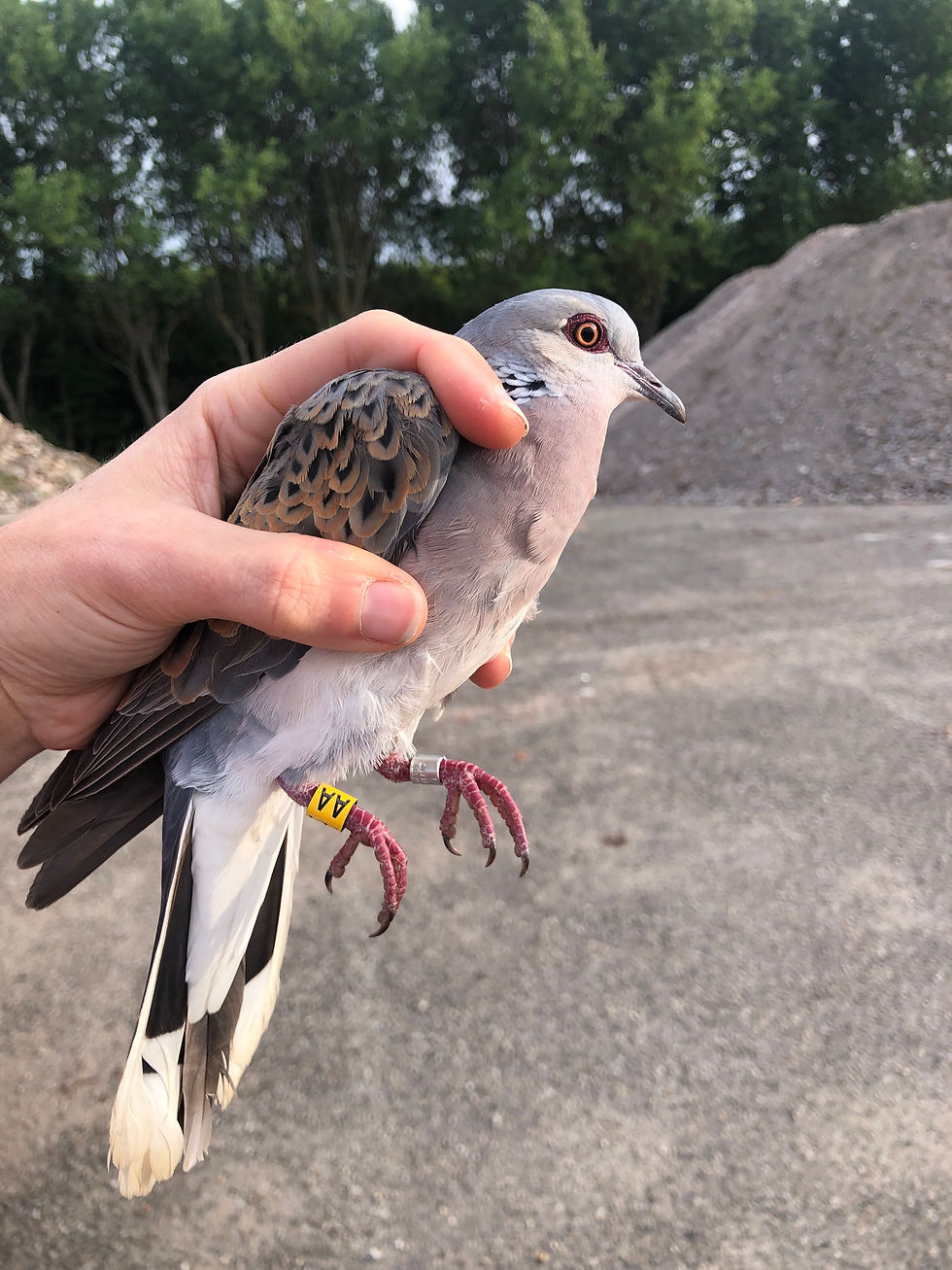It’s been a while since the last update, but a lot has happened since then!
The project on Walcheren – a collaboration with local farmers – to test food plots for turtle doves has now finished. The project was a follow up from research in the UK, which showed that a lack of food (seed) in spring could be one of the main issues for turtle doves during the breeding season.
While we were not able to confirm this during our project in Zeeland, and we were ultimatly unable to find the 'perfect recipe' for turtle dove food plots, the results were still very valuable. We learned a lot about creating suitable food plots and how to manage them, and about how the tagged turtle doves use the landscape on a daily basis. Their use of supplementary feeding areas and of stored/spilled grain earlier in the season stood out once again, alongside their clear preference for areas where the 'small-scale landscape' of pre-agricultural intensification (areas with smaller fields, hedgerows, scrub, field margins, and semi-paved farm tracks).

So, the search for a (simple!) and reliable food-related conservation measure continues. But with the knowledge we’ve gained, we’re a step further along.
👉 Curious about the results? The full report is available on the Downloads page.
At the end of the project, we also created a practical guidance document on how to create and manage turtle dove food plots. It is still a work in progress, and will change as we continue to learn more, but it’s a great starting point for anyone who wants to try boosting food availability for turtle doves. You can find it on the Downloads page too.
With the support of the Province, two new projects have started in Zeeland
1. Tailored advice for landowners (Walcheren and Beveland) Whether you're a private landowner, a charity, or a business... if you’d like to do more for turtle doves and biodiversity in your area, feel free to get in touch. Together with Stichting Landschapsbeheer Zeeland, we are offering free, tailored advice and support. It doesn’t matter whether you manage a campsite, farm, sports park, business terrein or just have a large garden – we can look at the whole site and provide advice for both small and large-scale improvements you can make to your landscaping and/or management. While we specifically tailor changes to suit turtle doves, many other animals, insects and plants will benefit from them as well.
2. Monitoring the local turtle dove population on Walcheren and Noord-Beveland
Provincie Zeeland wants to know more about the turtle dove population on Walcheren - how many return from Africa each year to breed, and whether the population is growing. In recent years, a hunting ban in southern Europe has led to strong population growth in France and Spain. The question is when the Netherlands will also begin to see population growth. With the (unfortunate) reopening of turtle dove hunting this year in parts of southern Europe (albeit in lower numbers than before), this makes it even more important to keep a close eye on the breeding population.

To do this, a colour ringing project has been started, marking turtle doves with yellow colour rings, each with two large black letters. This makes it possible for birdwatchers, photographers, and members of the public to recognise individuals from a distance.
📩 If you spot a colour-ringed turtle dove, send me an email with the details, location and date. I’ll reply with more info about the dove – its name, where and when it was ringed, and other interesting facts.
🙌 Want to get more involved? We’re always looking for good spots to feed and ring turtle doves from April to June. If you have turtle doves in your garden or nearby, and you’d like to help, get in touch.
With the summer drawing to a close, turtle doves are busy fattening up and startig their journey back to Africa. So I’ll end this update by saying:
✨ Please leave your stubble fields standing until the end of the month – it gives the birds the fuel they need for their long migration south.







